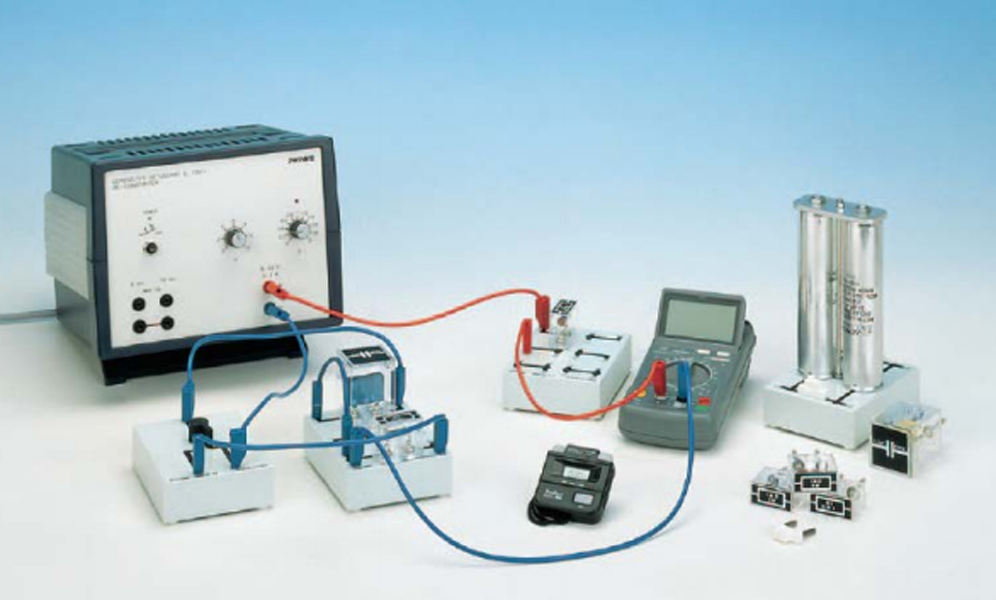Charging curve of a capacitor / charging and discharging of a capacitor

A capacitor is charged by way of a resistor. The current is measured as a function of time and the effects of capacitance, resistance and the voltage applied are determined.
- Simple and very clear set-up: only few components required
- Further experiments in electricity and electronics can be performed with the equipment
Resistor 1 MOhm, 1W, G1
Resistor 100 Ohm, 1W, G1
Capacitor 1 microF/ 100V, G2
Capacitor 4,7microF/ 100V, G2
Stopwatch, digital, 1/100 s
Short-circuit plug, white
Two-way switch, single pole
Connection box
Capacitor,2×30 micro-F
DMM, auto range, NiCr-Ni thermocouple
Connecting cord, 32 A, 250 mm, red
Connecting cord, 32 A, 250 mm, blue
PHYWE power supply, 230 V, DC: 0…12 V, 2 A / AC: 6 V, 12 V, 5 A
- To measure the charging current over time:
- using different capacitance values C, with constant voltage U and constant resistance R
- using different resistance values (C and U constant)
- using different voltages (R and C constant).
- To determine the equation representing the current when a capacitor is being charged, from the values measured.
- Charging
- Discharging
- Time constant
- Exponential function
- Half life
